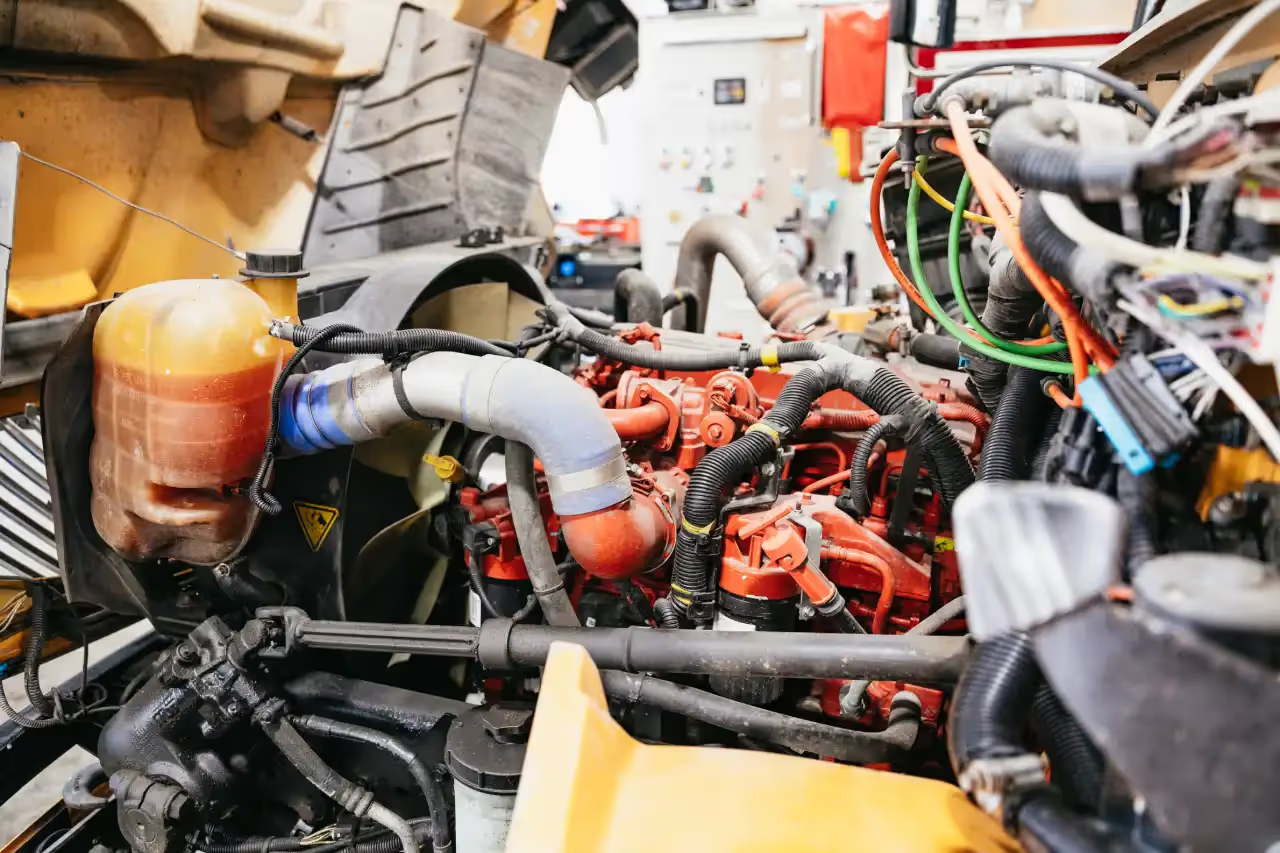The Three Primary Types of Transmissions
Understanding the different types of transmission systems is essential for anyone involved in heavy-duty trucks. These vehicles, designed to tackle demanding tasks and navigate challenging terrains, rely on efficient power delivery, optimized performance, and fuel economy. The three primary types of transmissions in heavy-duty trucks are manual transmissions, automatic transmissions, and automated manual transmissions (AMTs). By comprehending the distinctions between the three transmissions, drivers and fleet managers can decide which type of transmission best suits their heavy-duty trucking needs.
Manual Transmissions
Manual transmissions, also known as standard or stick-shift transmissions, require the driver to manually shift gears using a clutch pedal and gear lever. They offer greater control over gear selection, making them a preferred choice for drivers that require precise gear changes, such as off-road driving or towing heavy loads. Manual transmissions typically have a range of gears, including low, intermediate, and high gears, allowing the driver to optimize power delivery based on the load and terrain.
Heavy-duty trucks utilize three main types of manual transmissions: range transmissions, splitter transmissions, and range-splitter transmissions. Each type offers distinct gear selection capabilities for various applications and performance requirements.
Range Transmissions
Range transmissions, also known as "straight" or "direct" transmissions, have a fixed number of gear ranges. To shift gears within a range transmission, the driver engages the clutch and moves the gear lever to select the desired gear within the current range. Range transmissions are commonly found in heavy-duty trucks used for long-haul applications where a limited number of gear ratios are sufficient, such as cruising on highways with consistent speed and terrain.
Splitter Transmissions
Splitter transmissions are designed to provide additional gear ratios within each gear range. They have a "splitter" lever that allows the driver to divide each gear range into two. The driver can select between the lower or higher ratio within the current gear range by engaging the clutch and shifting the splitter lever. They are commonly used in heavy-duty trucks involved in applications such as regional hauling, where a wider range of gear ratios is required.
Range-Splitter Transmissions
Range-splitter transmissions combine the features of both range and splitter transmissions. They offer a fixed number of gear ranges like range transmissions, but within each range, they provide the ability to split gears like splitter transmissions. They are popular in heavy-duty trucks used for versatile applications, such as construction, where the ability to handle different load conditions and terrains is essential.
Automatic Transmissions
Automatic transmissions have become increasingly popular in heavy-duty trucks due to their convenience, ease of use, and ability to optimize performance. Heavy-duty trucks equipped with automatic transmissions automatically shift gears based on factors such as vehicle speed, load conditions, and driver input. This eliminates the need for manual clutch engagement and gear shifting, reducing driver fatigue, particularly in demanding urban or stop-and-go driving environments. Automatic transmissions offer precise gear selection and can adapt to varying driving conditions, making them suitable for a wide range of heavy-duty applications, including long-haul trucking, city delivery, and off-road operations. With ongoing technological advancements, automatic transmissions continue to evolve, providing improved efficiency, drivability, and reliability in heavy-duty trucks.
The two different types of automatic transmissions commonly found in heavy-duty trucks are planetary automatic transmissions and dual-clutch transmissions. Each type offers unique features and benefits, catering to specific performance requirements.
Planetary Automatic Transmissions
Planetary automatic transmissions, also known as traditional automatic transmissions, utilize a complex system of gears, known as planetary gearsets, to achieve gear ratio changes. These transmissions employ a torque converter consisting of a pump, turbine, and stator to transfer power from the engine to the transmission. They are known for their ease of use, smooth operation, and ability to adapt to varying driving conditions. Planetary automatic transmissions are commonly used in heavy-duty trucks where driver comfort, convenience, and reliable performance are prioritized.
Dual-Clutch Transmissions (DCT)
Dual-clutch transmissions, also referred to as twin-clutch transmissions, are a relatively newer technology in heavy-duty trucks. DCTs feature two separate clutches, one for odd gears and the other for even gears. While one clutch is engaged, the other prepares the next gear for a quick and seamless gear change. They are particularly suitable for heavy-duty trucks that require rapid acceleration, such as those used in performance-oriented applications or hilly terrains. DCTs provide precise gear selection, enhanced drivability, and reduced power loss, making them an attractive option for heavy-duty truck operators seeking optimal performance and efficiency.
Automated-manual transmissions (AMTs)
Automated-manual transmissions (AMTs) have gained significant popularity in heavy-duty trucks, offering a combination of the convenience of automatic transmissions with the control of manual transmissions. AMTs utilize advanced technology to automate the shifting process, enhancing heavy-duty trucks' overall performance and efficiency. These transmissions employ sensors, processors, and actuators to monitor vehicle speed, engine load, and other parameters to determine the optimal gear shift points.
AMTs feature a manual gearbox with a clutch system, but the clutch engagement and gear shifting are controlled electronically. When a gear change is required, the AMT system disengages the clutch, shifts gears, and re-engages the clutch seamlessly. This eliminates the need for manual clutch operation, reducing driver fatigue and improving overall drivability. AMTs offer several advantages, including improved fuel efficiency, reduced wear on driveline components, and consistent gear shifting. They often incorporate additional features, such as adaptive shifting programs that can adapt to different driving conditions and terrain. AMTs also provide features like hill-start assist, where the transmission holds the vehicle in place when starting on an incline, preventing rollbacks.
These transmissions have gained popularity in heavy-duty trucking due to their ability to optimize fuel efficiency, reduce driver error, and provide smoother gear changes. AMTs are well-suited for various applications, including long-haul trucking, construction, and urban delivery. As technology advances, AMTs are expected to offer even more refined control, improved efficiency, and enhanced performance, further solidifying their position as a valuable transmission option for heavy-duty trucks.
Conclusion
In conclusion, understanding the different types of transmissions for heavy-duty trucks, including manual transmissions, automatic transmissions, and automated-manual transmissions, is crucial for drivers, fleet managers, and industry professionals. Each type offers distinct advantages and characteristics that can significantly impact heavy-duty trucks' performance, efficiency, and overall driving experience. Knowing the differences between these transmission systems allows for informed decision-making when selecting the most suitable option for specific applications and operational requirements. By understanding these distinctions, drivers and fleet managers can optimize fuel efficiency, improve drivability, and ensure the reliability and longevity of heavy-duty trucks.





.svg)

